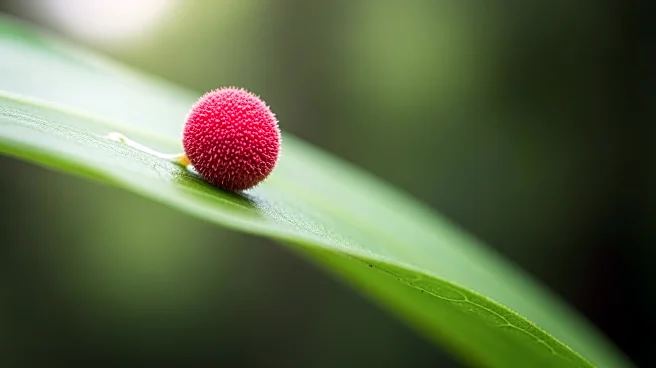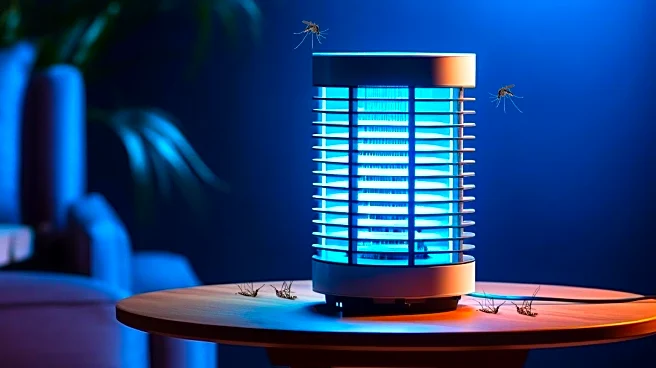What's Happening?
Scientists have developed an engineered strain of Metarhizium fungus that emits a sweet floral scent to attract and kill mosquitoes. This innovative approach leverages the mosquito's natural attraction
to flowers, using the fungus's spores as a lethal lure. The research, conducted by an international team and published in Nature Microbiology, highlights the potential of this method to combat mosquito-borne diseases such as malaria and dengue, which have become increasingly resistant to chemical pesticides. The engineered fungus, which produces the compound longifolene, is both practical and affordable, making it a promising tool for reducing mosquito-related deaths, particularly in poorer regions.
Why It's Important?
The development of this engineered fungus is significant as it offers a new, eco-friendly alternative to traditional chemical insecticides, which mosquitoes have increasingly resisted. With global temperatures rising, mosquito-borne diseases are spreading beyond tropical regions, potentially threatening new areas, including the United States. The fungus's affordability and ease of production could make it a vital tool in global health efforts, especially in resource-limited settings. This biological approach may also be more sustainable, as it is less likely for mosquitoes to develop resistance compared to chemical methods.
What's Next?
The research team plans to conduct larger-scale outdoor trials to assess the fungus's effectiveness in real-world conditions and seek regulatory approval. These trials will help determine the feasibility of deploying this method on a broader scale. As mosquito-borne diseases continue to pose a global health threat, the development of diverse and flexible control tools, such as this engineered fungus, will be crucial in providing effective solutions tailored to different regions and mosquito species.
Beyond the Headlines
The use of genetically engineered organisms in pest control raises ethical and ecological considerations. While the fungus is designed to target mosquitoes specifically, its impact on other insect populations and ecosystems will need careful monitoring. Additionally, the potential for mosquitoes to adapt to this new control method, although considered unlikely, remains a point of interest for further research. The success of this approach could pave the way for similar innovations in controlling other pest species.











